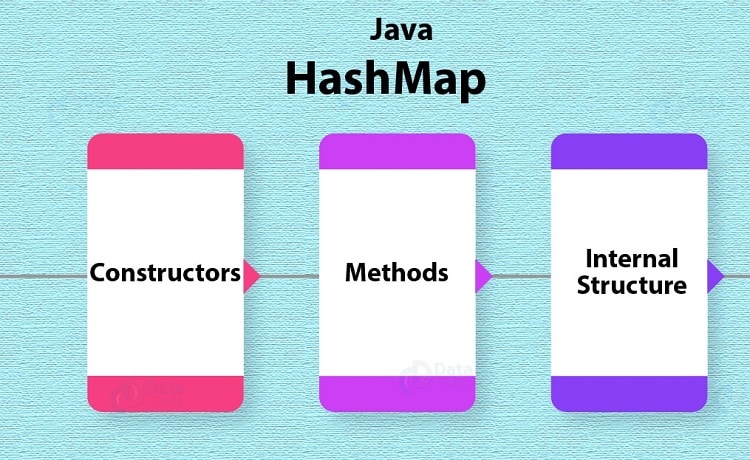HashMap is one of the most talked about topics in Java, and it is a unique feature Java has. It is a map-based collection class where you can store key and value pair-based data. The key and value pair data are widely used as a data structure in software applications. You can perform actions like insertion, deletion, and locating elements in the map. HashMap is an upgrade from the traditional LinkedList and ArrayList. Therefore, it is much more efficient than those data structures. A HashMap works on the popular hashing principle. The values are stored in the HashMap, and they are retrieved using their respective keys.
The Working Of HashMap –
There are many wrong notions about the working of HashMap and as a software developer, you need to understand the concepts and working principle of everything you use in a program to optimize the application. HashMap stores Objects as Entry instances which is neither a key now a value. Entry Class is an inner class which is responsible for holding the keys and the values. The Entry instances are stored in an array and to store values, it uses put method.
The Put Method –
The put method first checks the given key if it is null or not. If it is null, it will be stored at zero position. Then the hashcode is applied to the key using hashcode method which does some shifting operation on the hashcode to store the value within the limits of an array. Then the IndexFor method is used to get the location to store the Entry object.
In case two different objects have the same hashcode, it works somewhat like a LinkedList. It checks the value of the next attribute, and if it is null, it inserts the object at that location. However, if it is not null, then the loop keeps on running until it finds a next attribute which is null. When you insert the same key with different values, the latest value is stored and returned when retrieved.
Apart from the put method for insertion, HashMap uses the Get method for retrieval, and the mechanism is the same as the Put method. First, the hash code of the key object is fetched and passed to find the bucket location. If it is found, the value is returned, if not then null is returned.
Benefits Of HashMap –
The reason for the popularity of HashMap over the traditional data structures available is because of its unordered and non-synchronized nature. This means that the time of insertion and the time for retrieval will not be the same. In most of the case, the retrieval is way faster than insertion which is what any large-scale application requires. Due to its non-synchronized nature, HashMap cannot be shared in multiple threads without some arrangement for proper synchronization beforehand. This means that only one thread can modify a hash table at any given point in time.
HashMap is a popular class in most of the Java libraries. In real-life applications, the retrieval of data is way more than insertion of data and HashMap is specialized in faster retrieval of data. Therefore, it is the speed that is the main benefit of using HashMap and speed is what we need in a large-scale application. Most importantly, in the worst case scenario, the speed of a HashMap can be equal to LinkedList and therefore, you have nothing to lose as such. However, even the worst case scenario is taken care of mostly in Java 8 as it detects the running worst-case performance and converts the list into a binary search tree for boosting the speed.
The speed is achieved by breaking a big list of data into mini lists and then it builds an array of these mini-lists. Therefore, to find an element, you do not have to go through the entire big list, you know by the concept of keys that which one of these mini lists has the element. Then you need to just search that mini list for the value. There are various types of HashMaps are coming up with time like Hashmap of hashMaps, multimap, ConcurrentHashMap, EnumMap, LinkedHashMap and much more. You should know all of these and all the methods associated with a HashMap to utilize it in different scenarios to make your application function more efficiently.
With the introduction of HashMap, Java has paved the path to move on from the traditional LinkedList and ArrayList to something that is more efficient and ready for handling large data. The association of Key with Value is a common mechanism used in large-scale applications as it is the case with databases. The drawback of LinkedList is that accessing the data stored is very slow while in an ArrayList, inserting and deleting the elements are quite slow. On the other hand, all the operations using HashMap are faster than both of these. Therefore, start using HashMap in your program as it is the norm followed in the corporate world.

